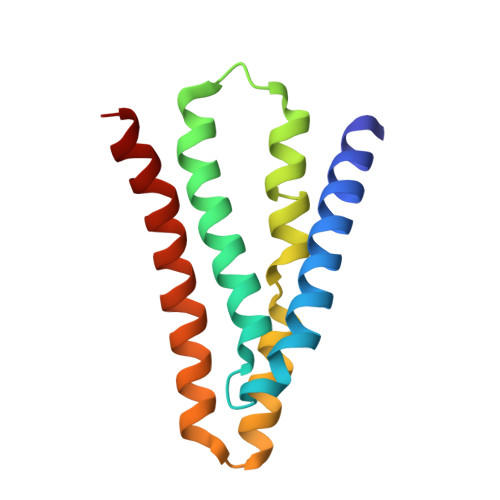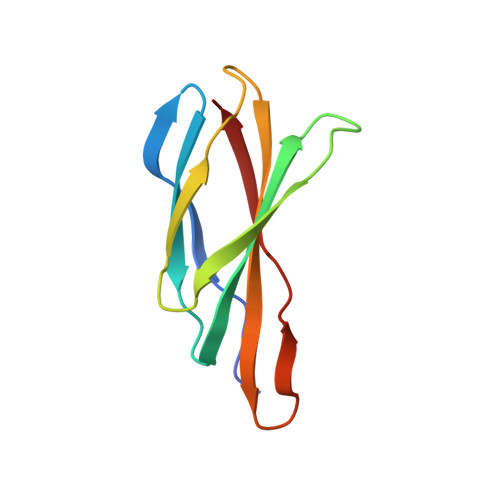The fluoride permeation pathway and anion recognition in Fluc family fluoride channels.
McIlwain, B.C., Gundepudi, R., Koff, B.B., Stockbridge, R.B.(2021) Elife 10
- PubMed: 34250906
- DOI: https://doi.org/10.7554/eLife.69482
- Primary Citation of Related Structures:
7KK8, 7KK9, 7KKA, 7KKB, 7KKR - PubMed Abstract:
Fluc family fluoride channels protect microbes against ambient environmental fluoride by undermining the cytoplasmic accumulation of this toxic halide. These proteins are structurally idiosyncratic, and thus the permeation pathway and mechanism have no analogy in other known ion channels. Although fluoride-binding sites were identified in previous structural studies, it was not evident how these ions access aqueous solution, and the molecular determinants of anion recognition and selectivity have not been elucidated. Using x-ray crystallography, planar bilayer electrophysiology, and liposome-based assays, we identified additional binding sites along the permeation pathway. We used this information to develop an oriented system for planar lipid bilayer electrophysiology and observed anion block at one of these sites, revealing insights into the mechanism of anion recognition. We propose a permeation mechanism involving alternating occupancy of anion-binding sites that are fully assembled only as the substrate approaches.
- Department of Molecular, Cellular, and Developmental Biology, University of Michigan, Ann Arbor, United States.
Organizational Affiliation:





















